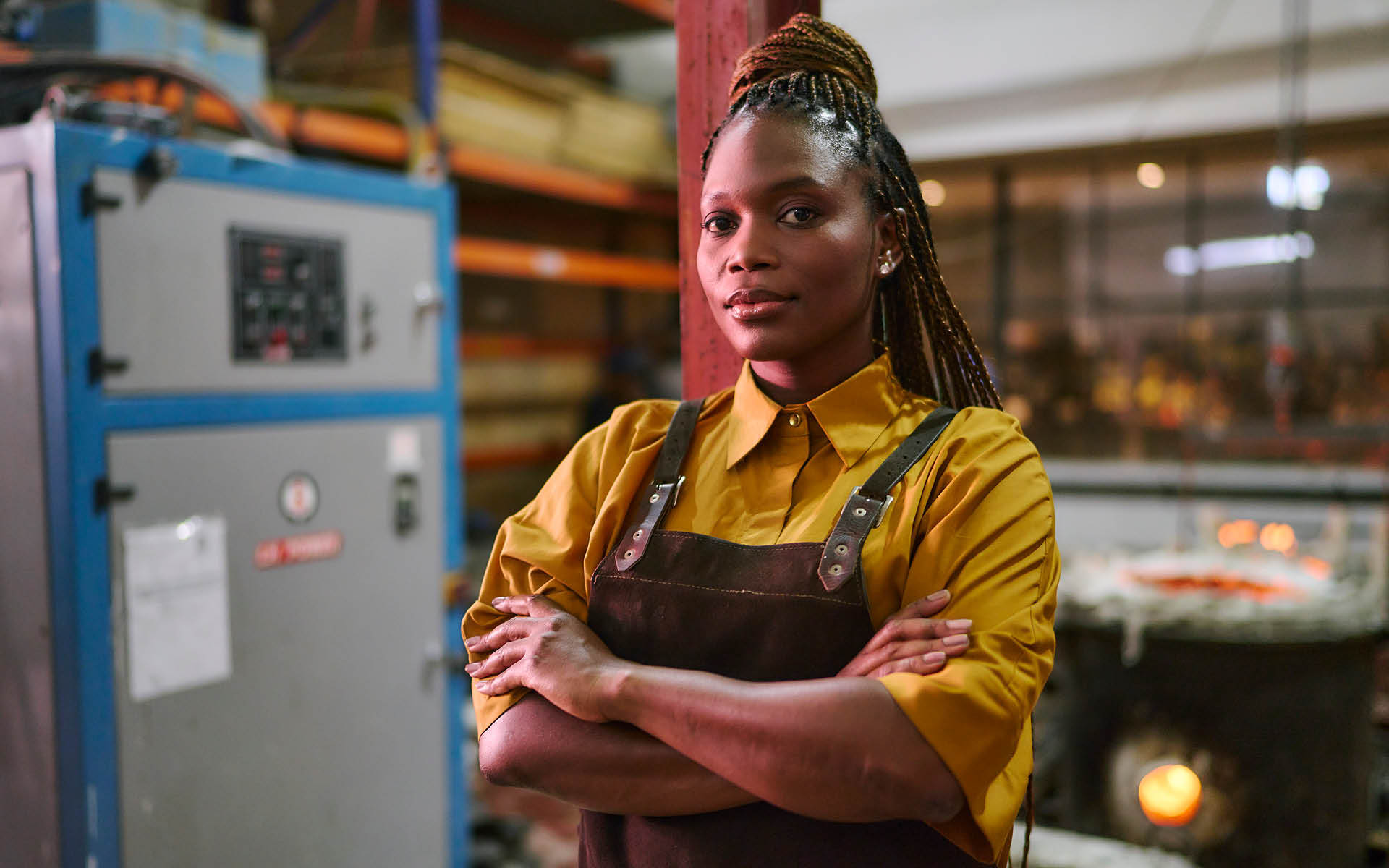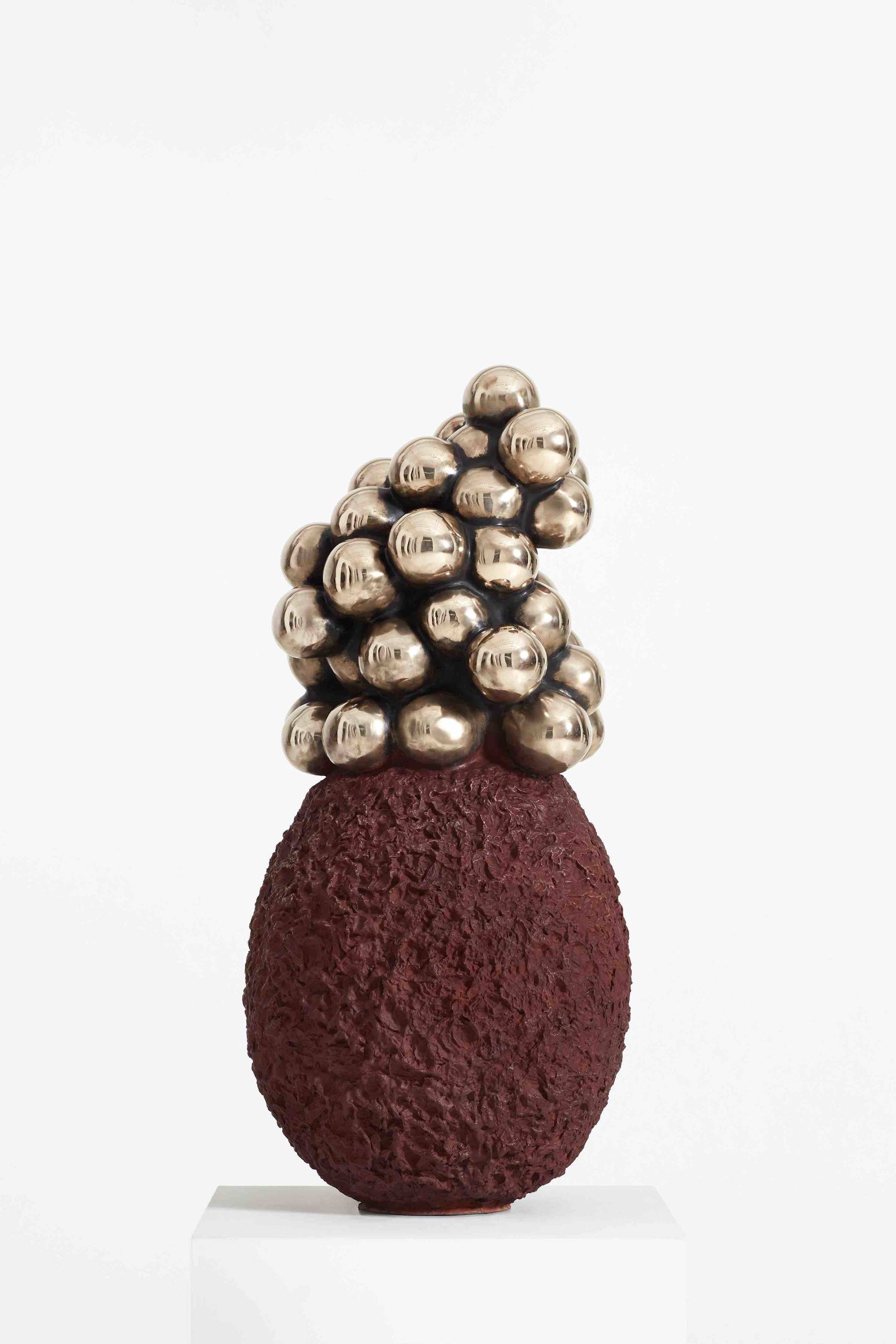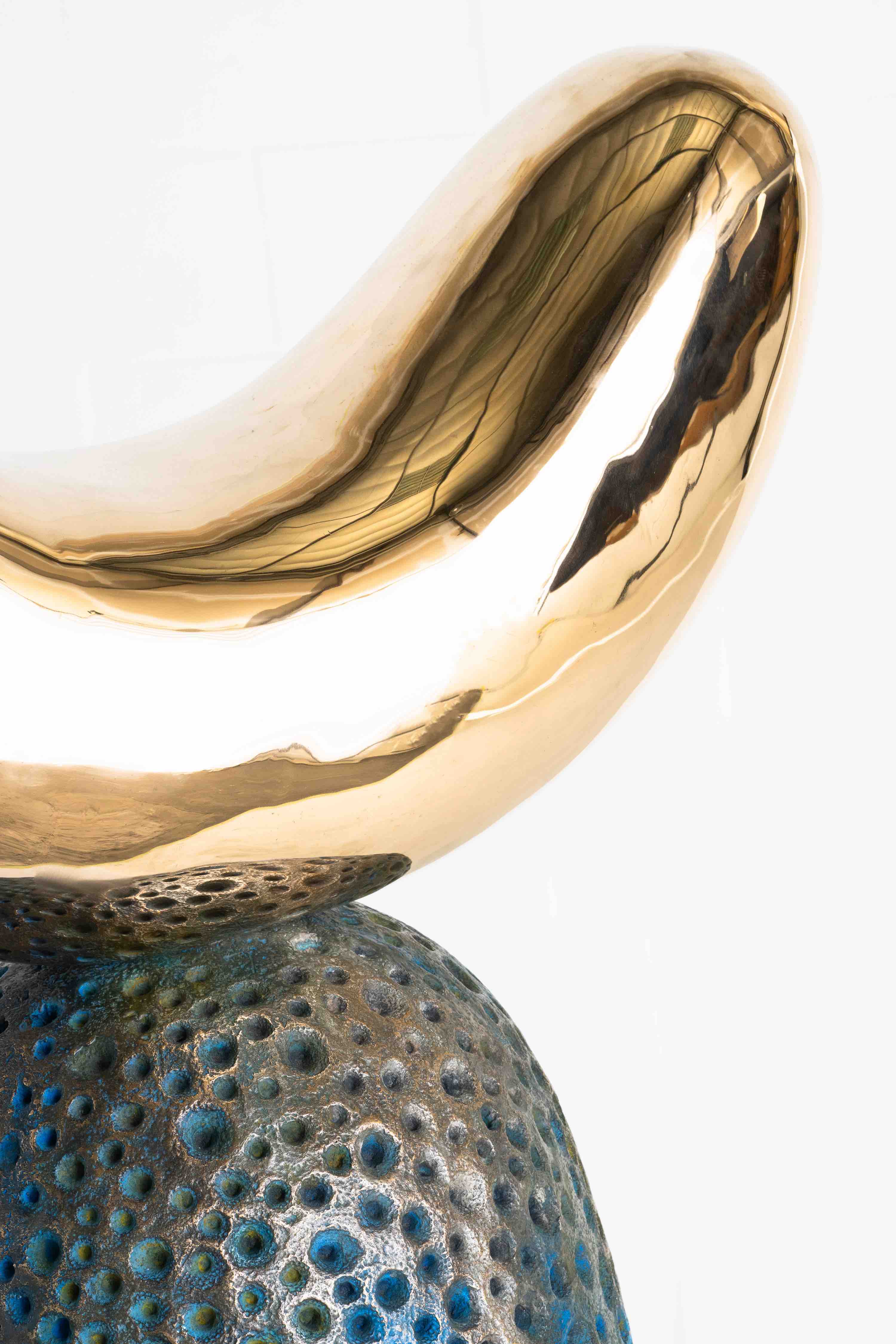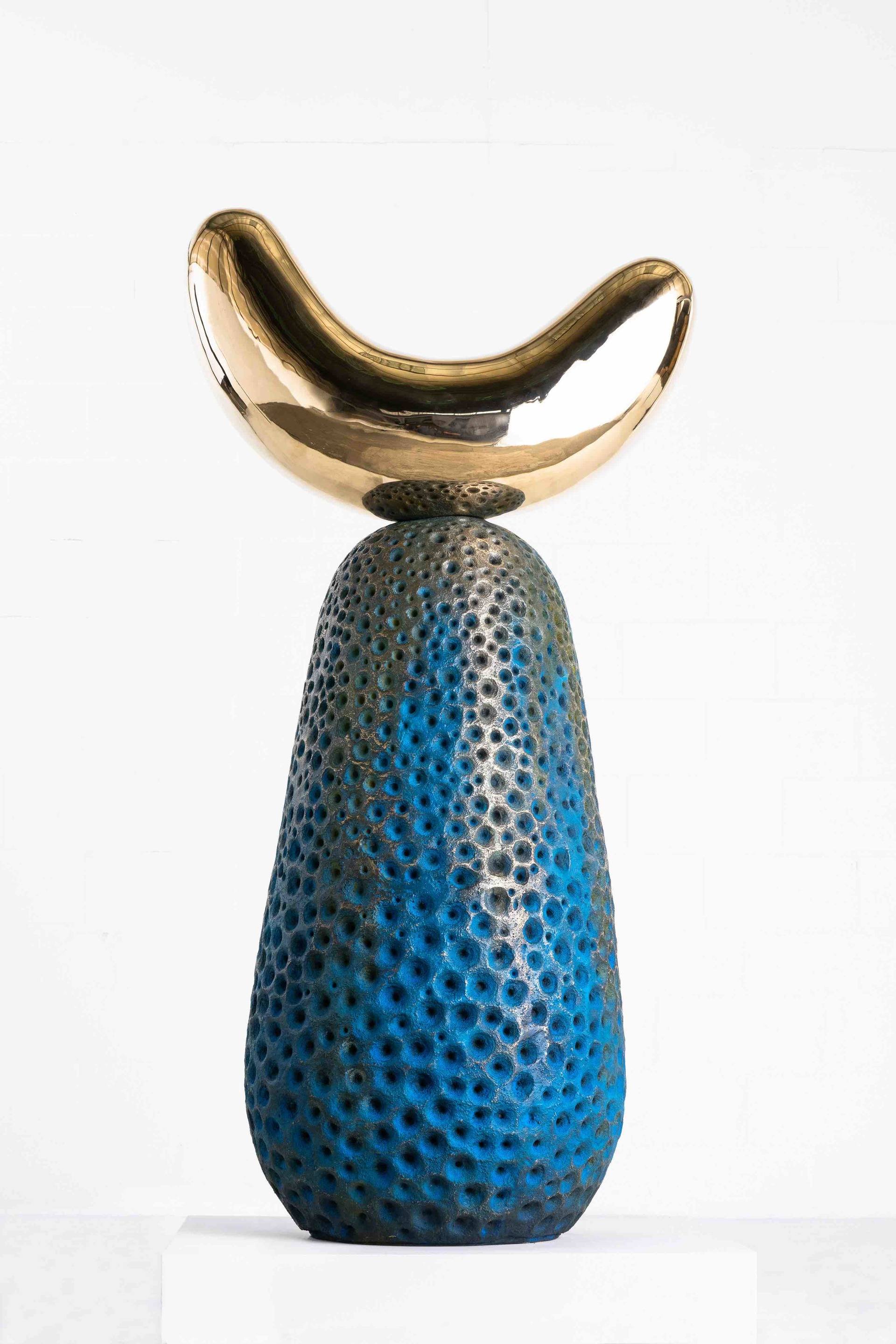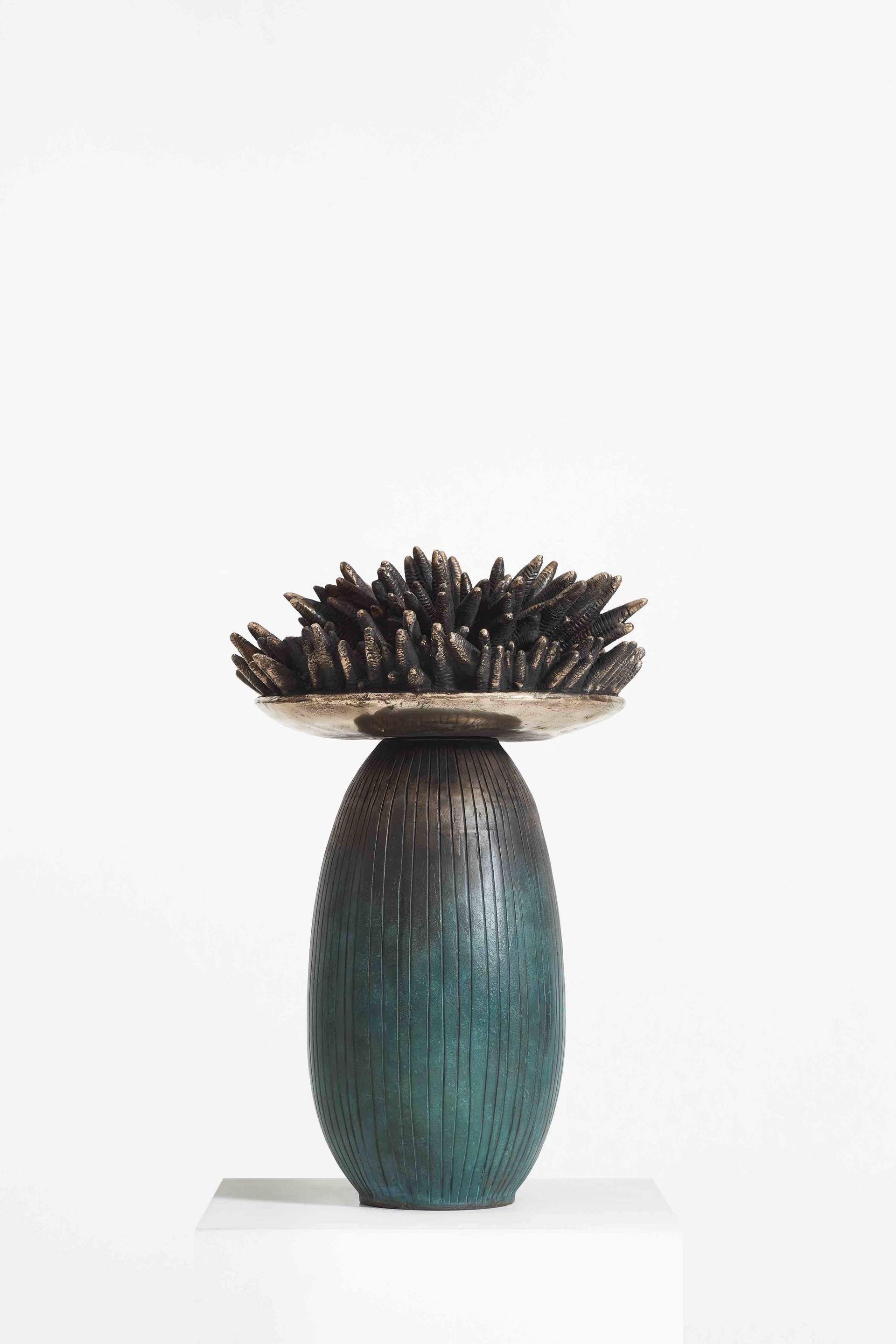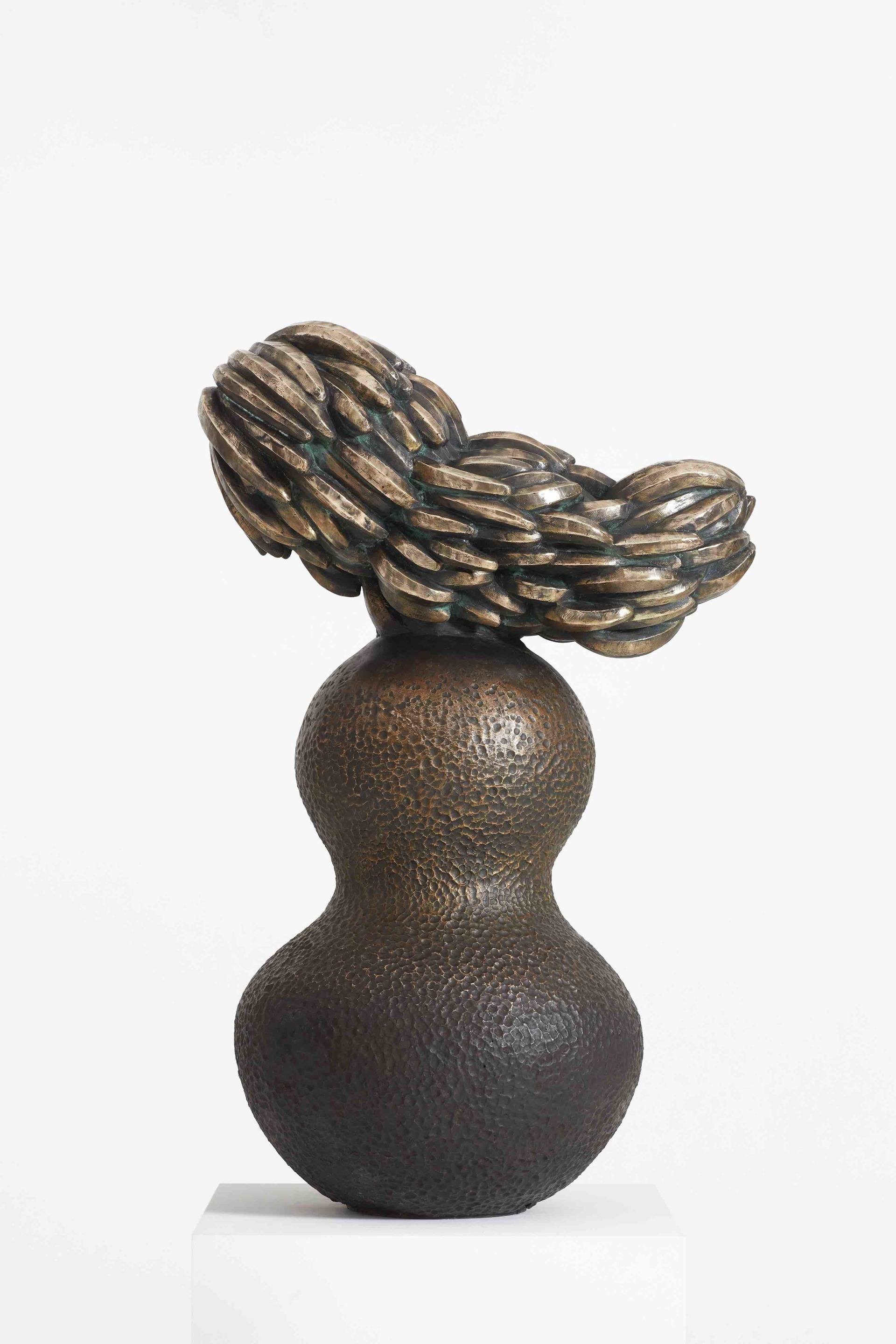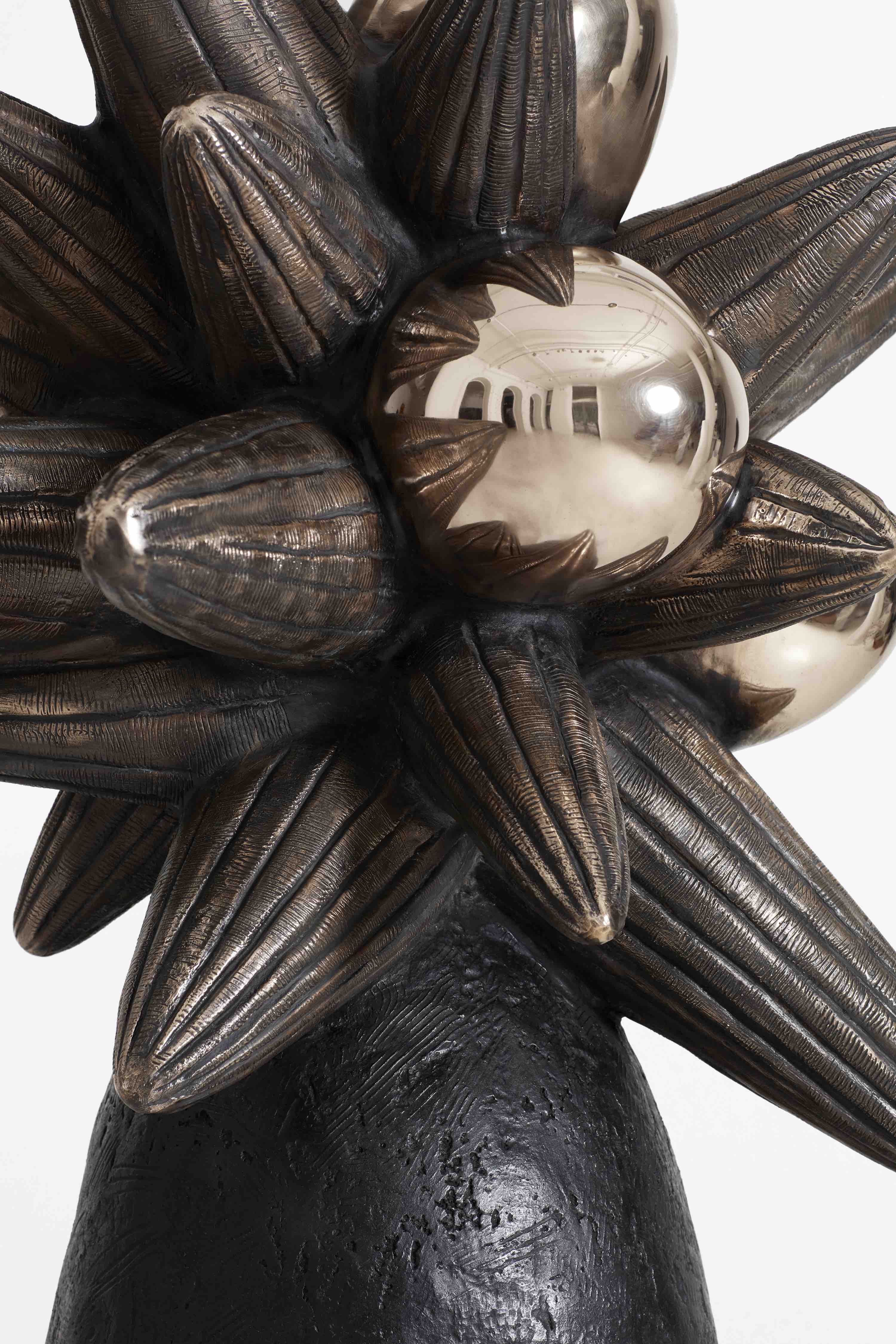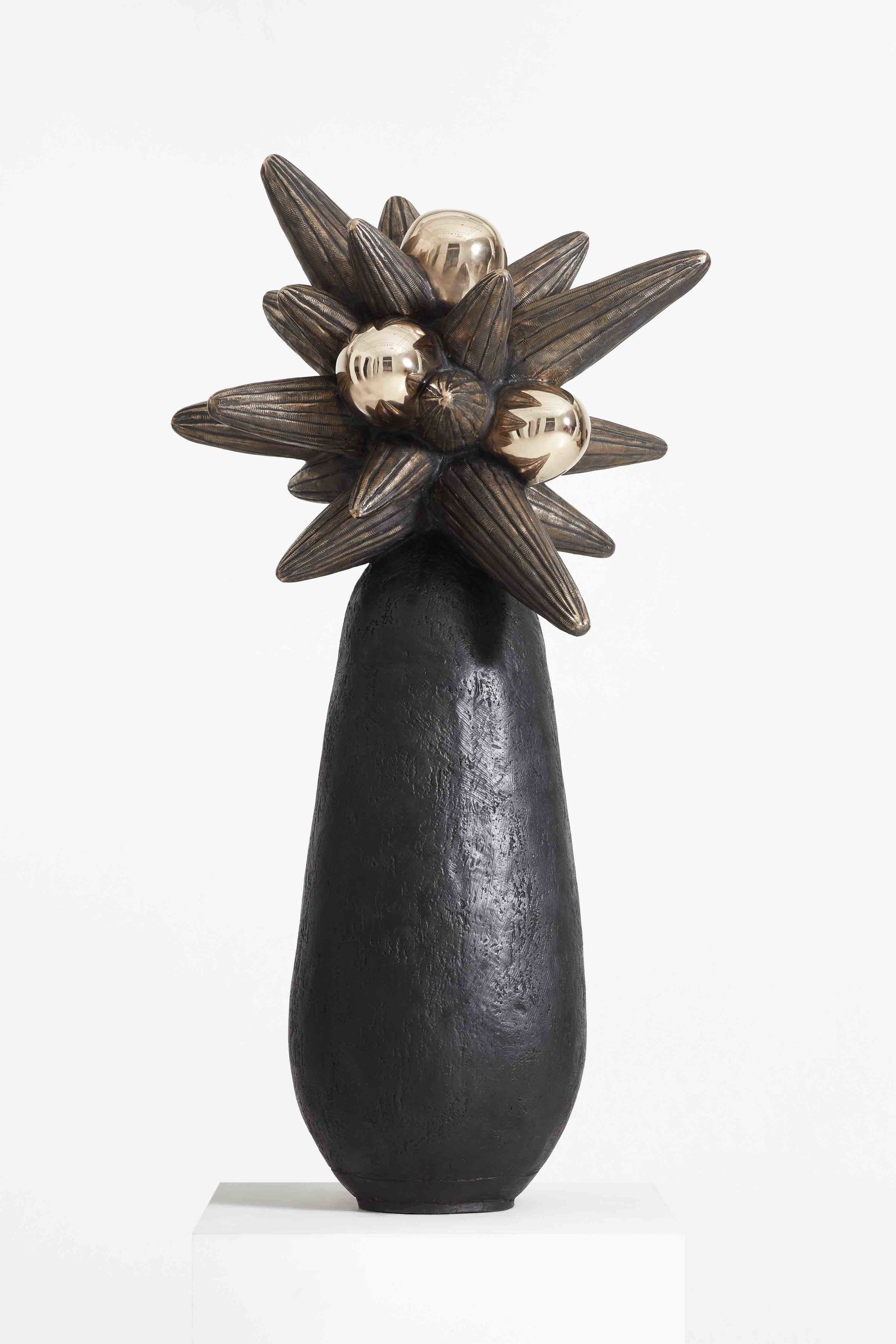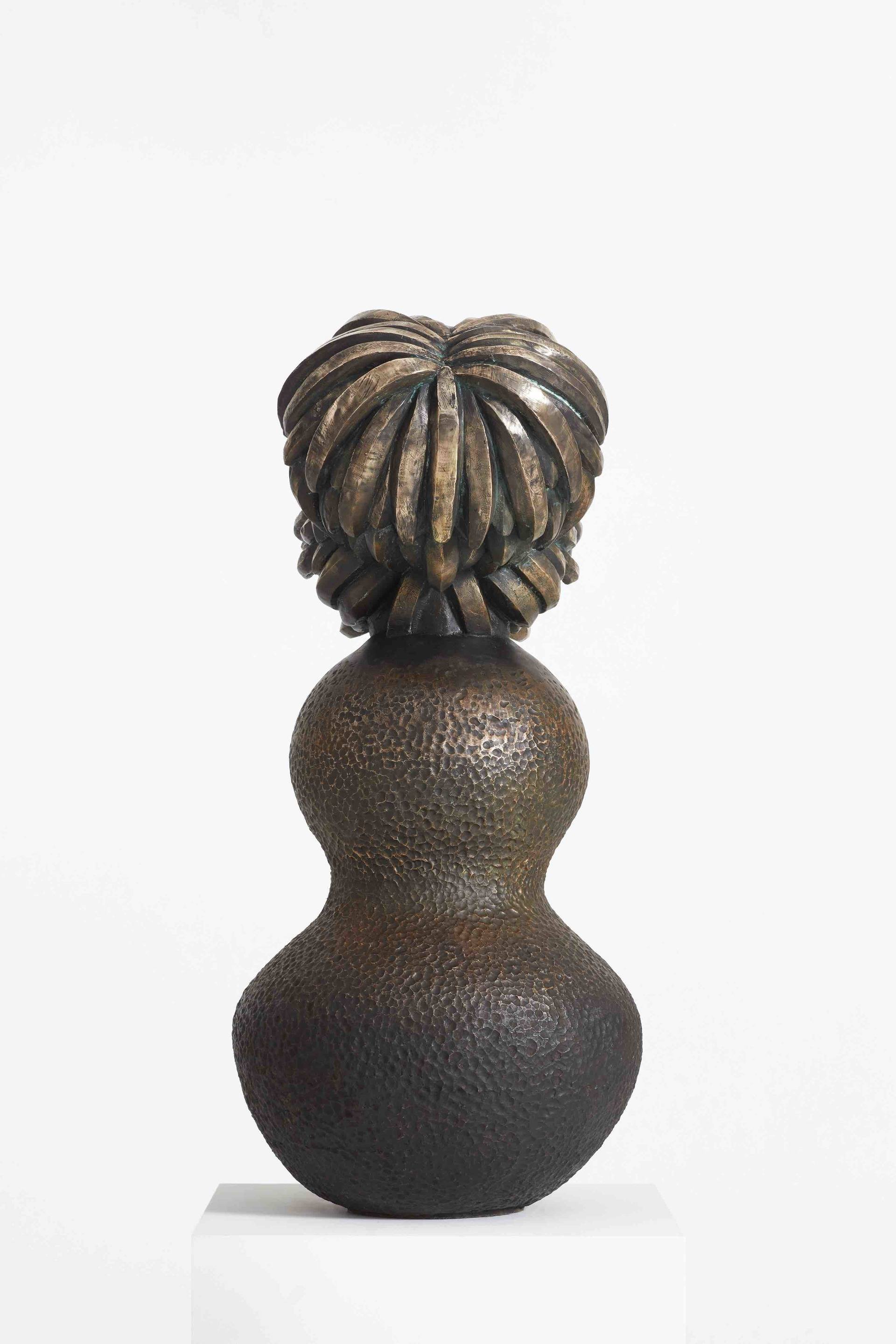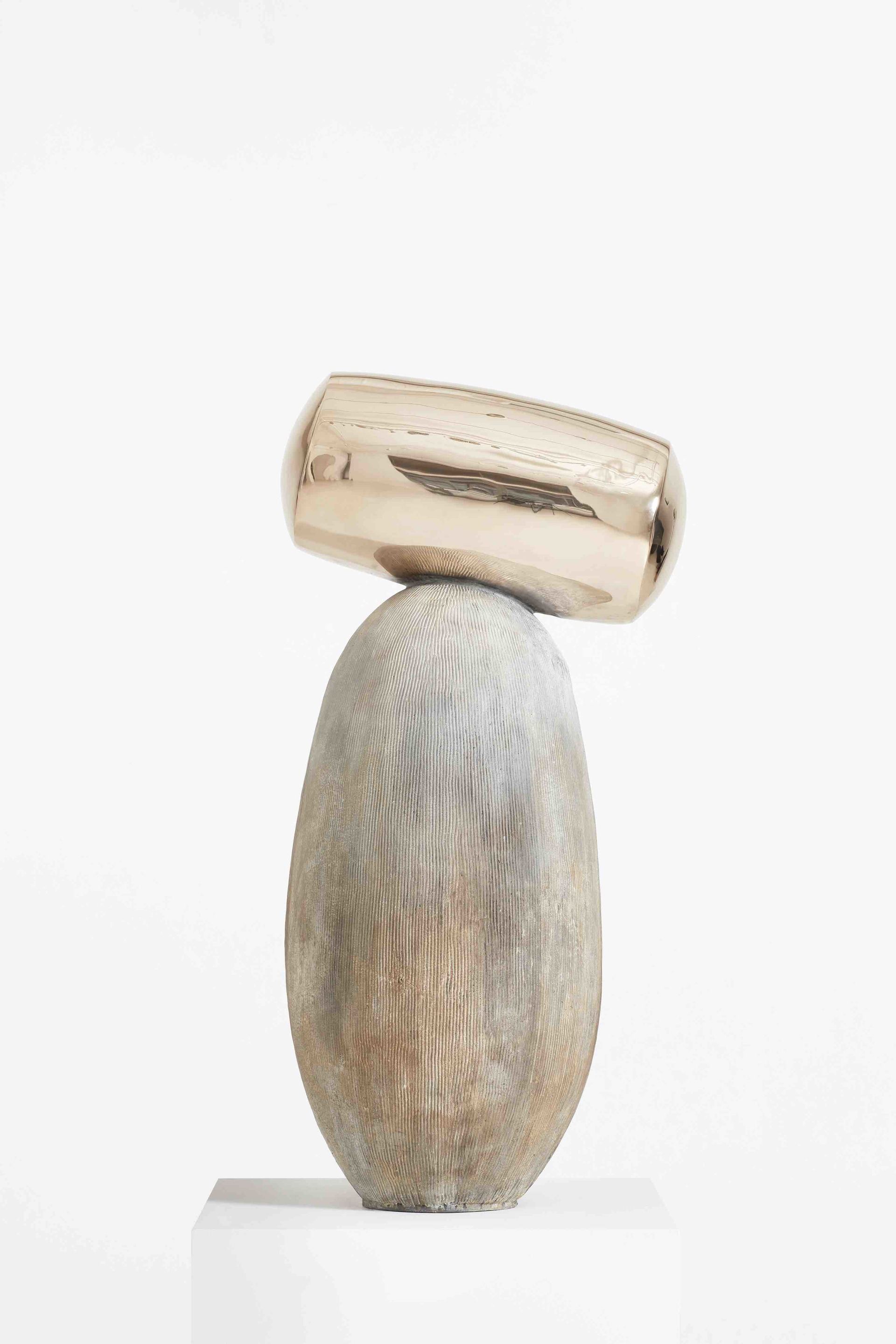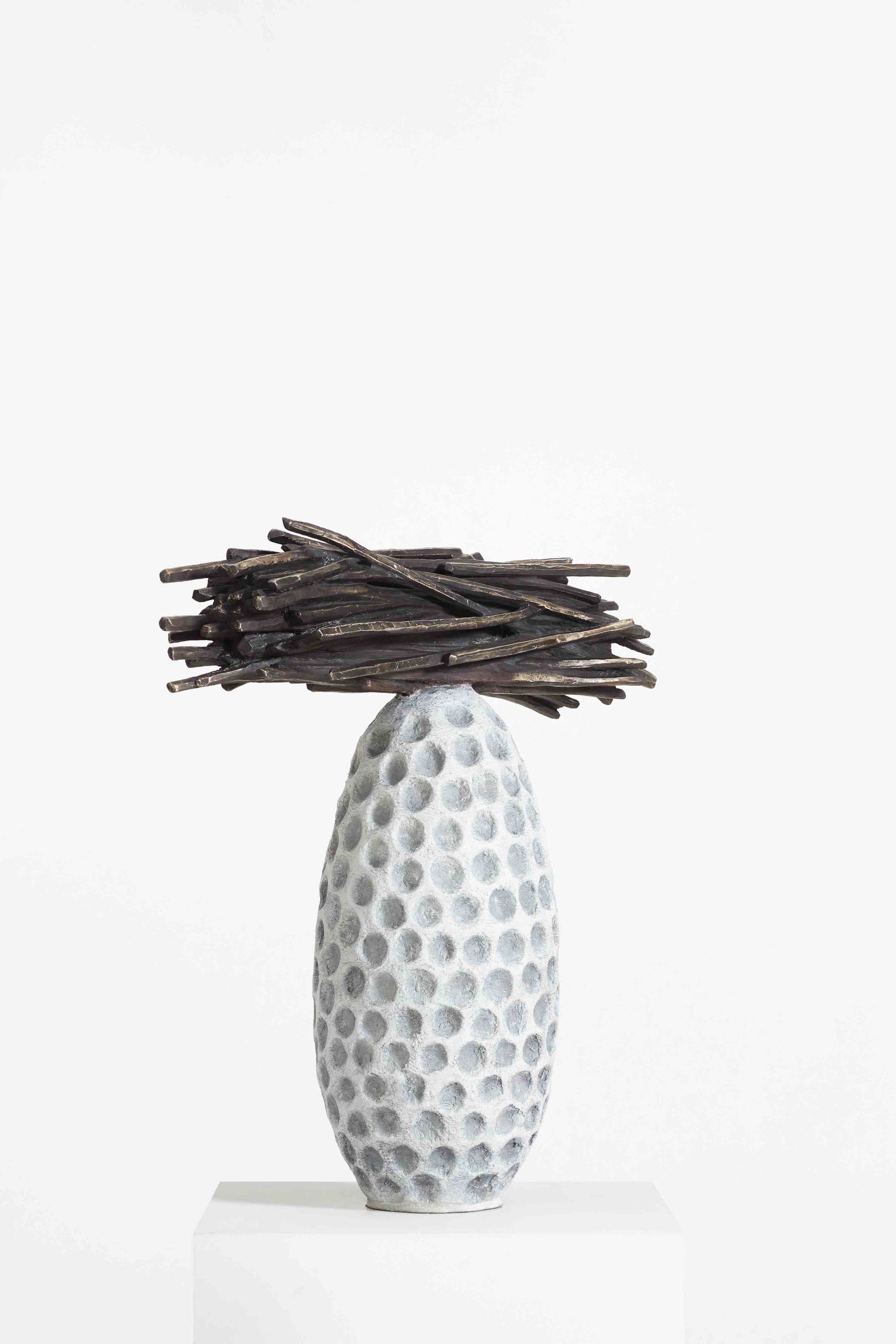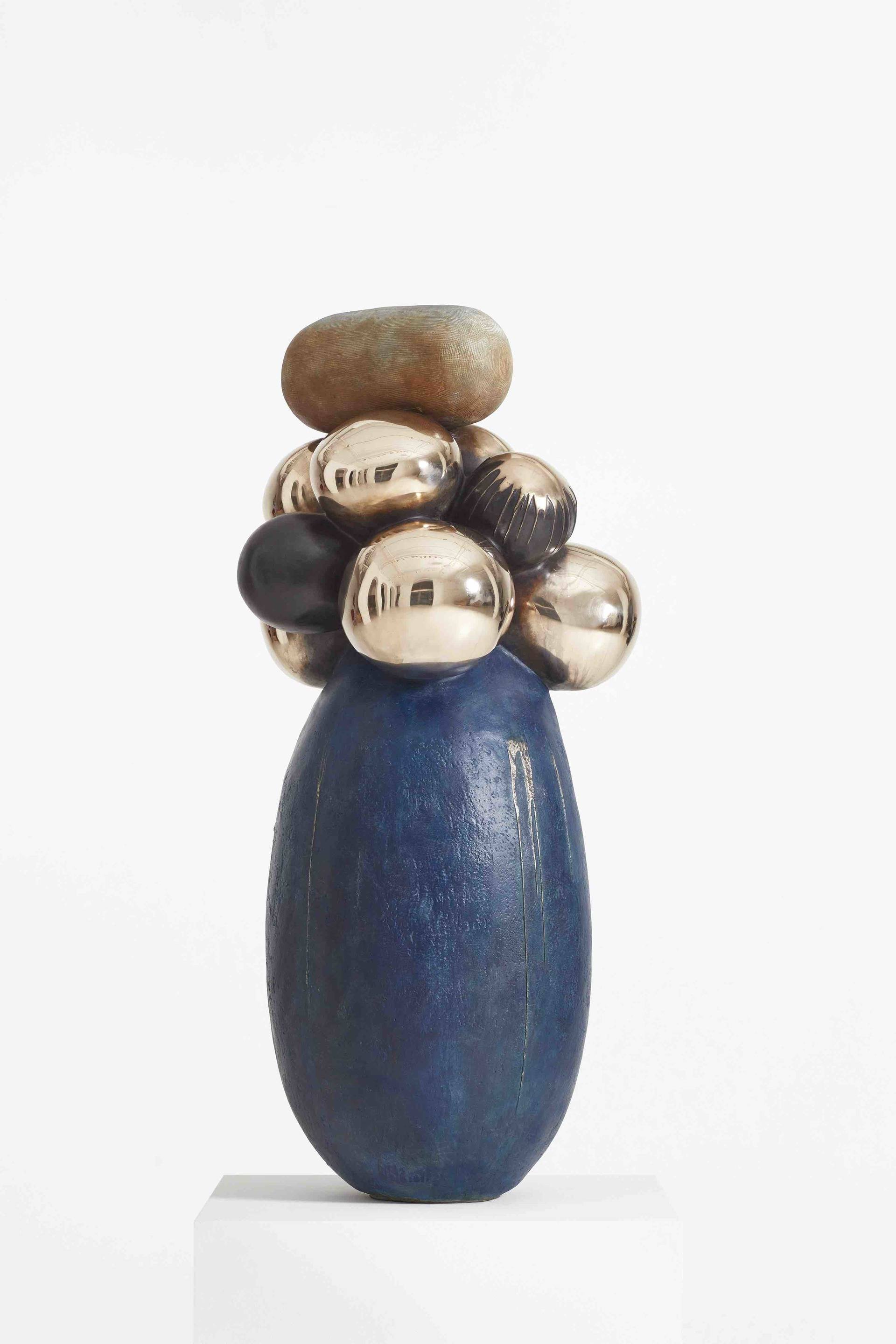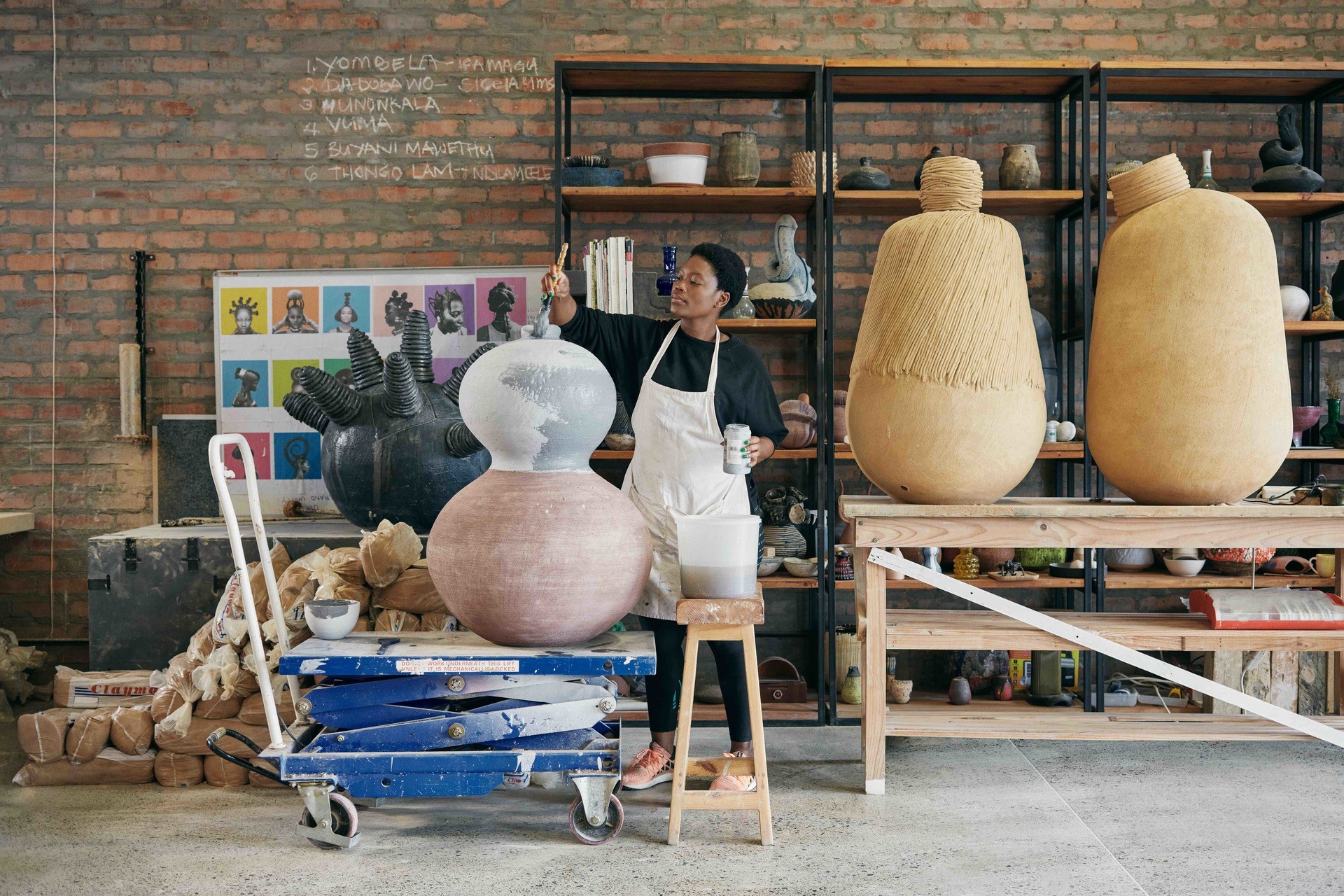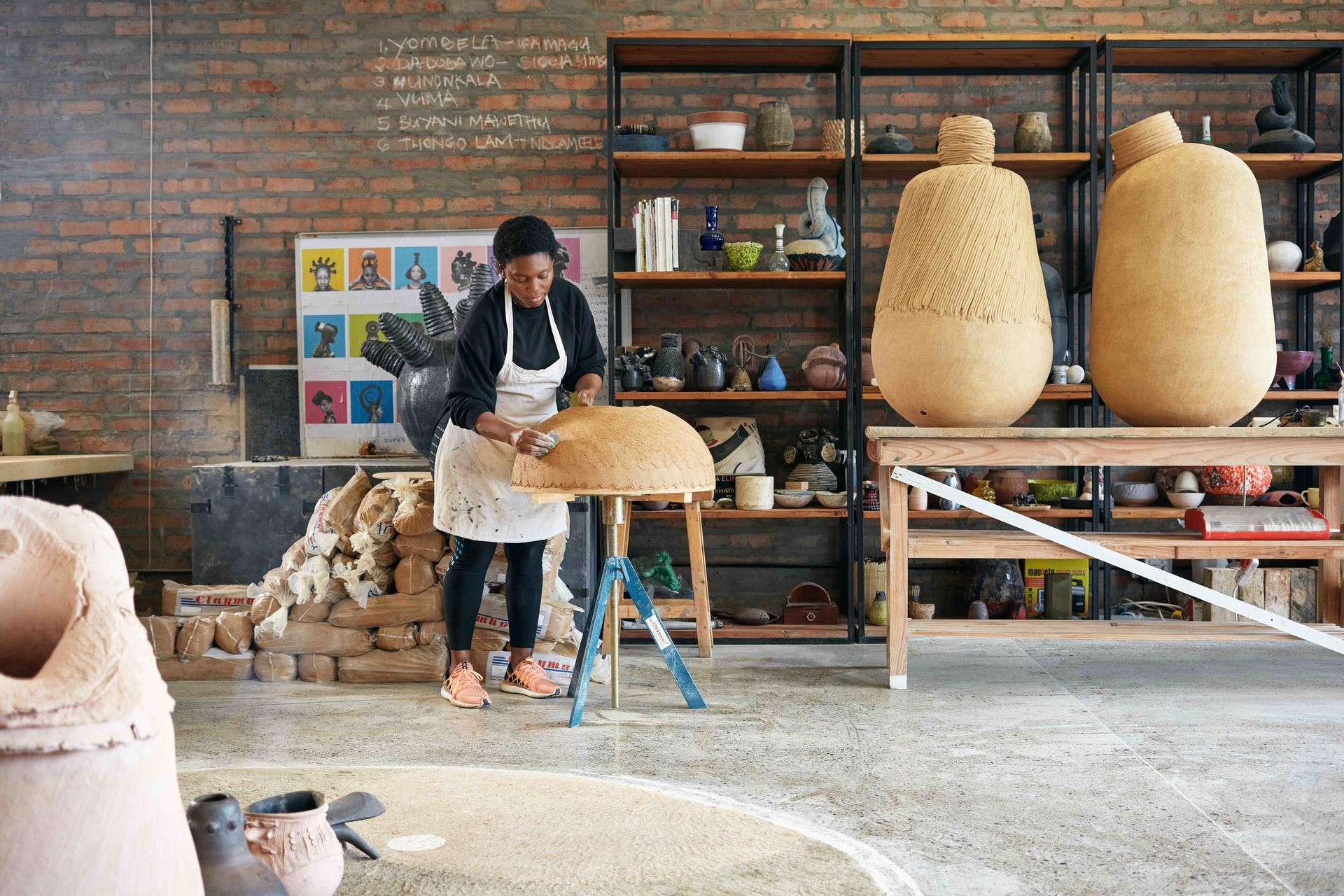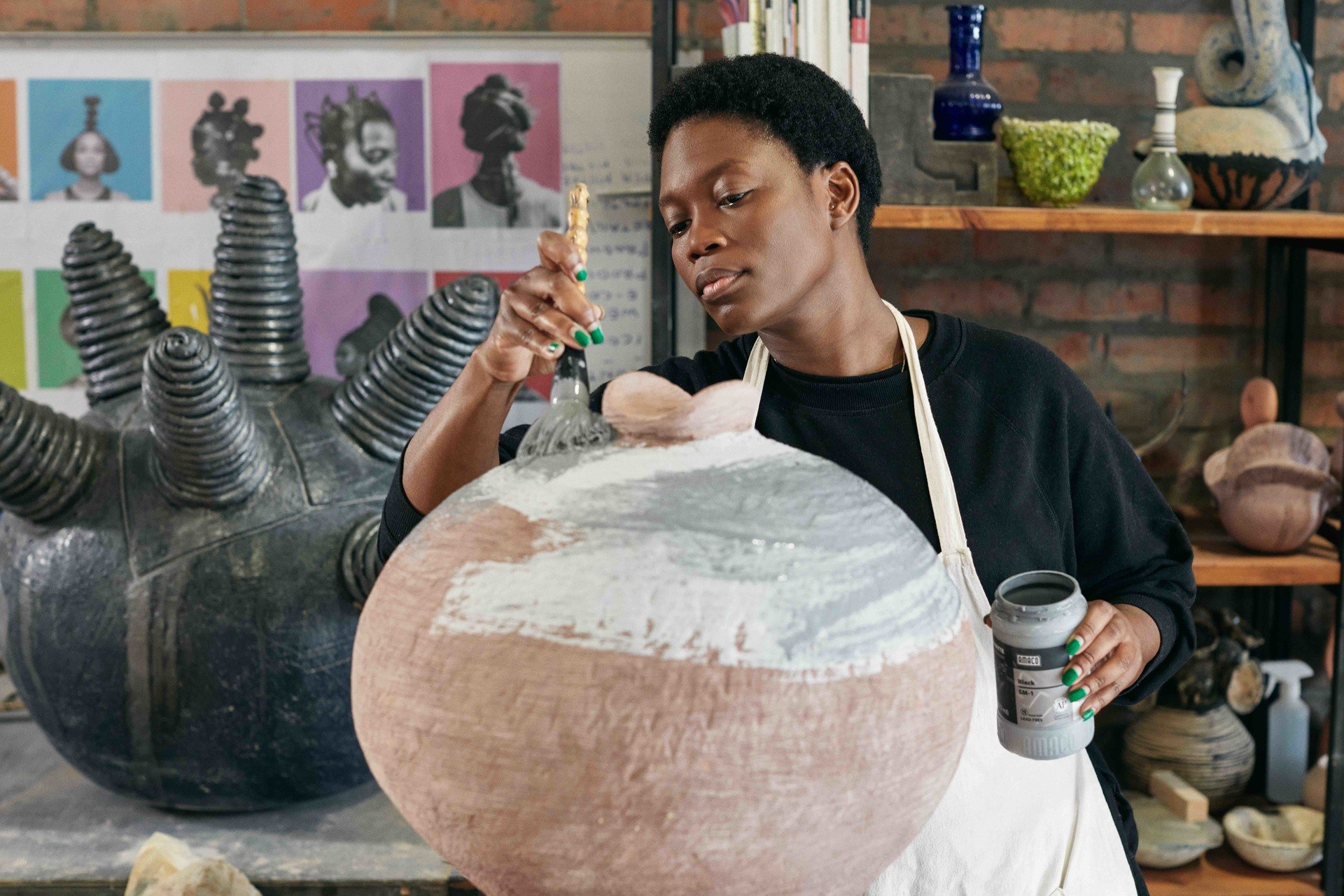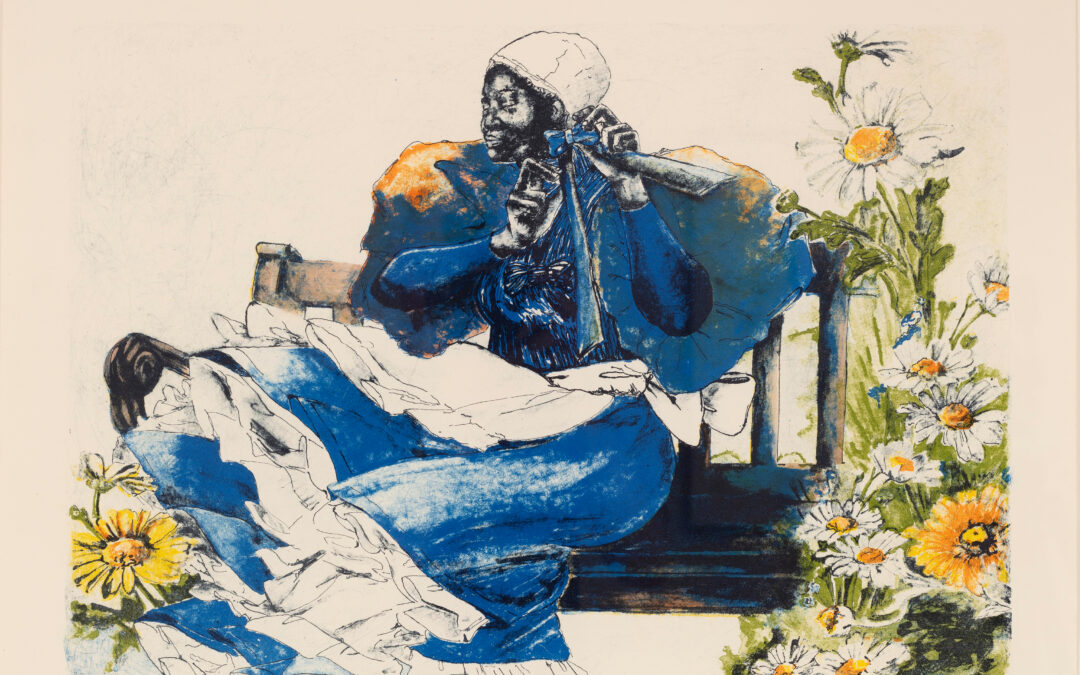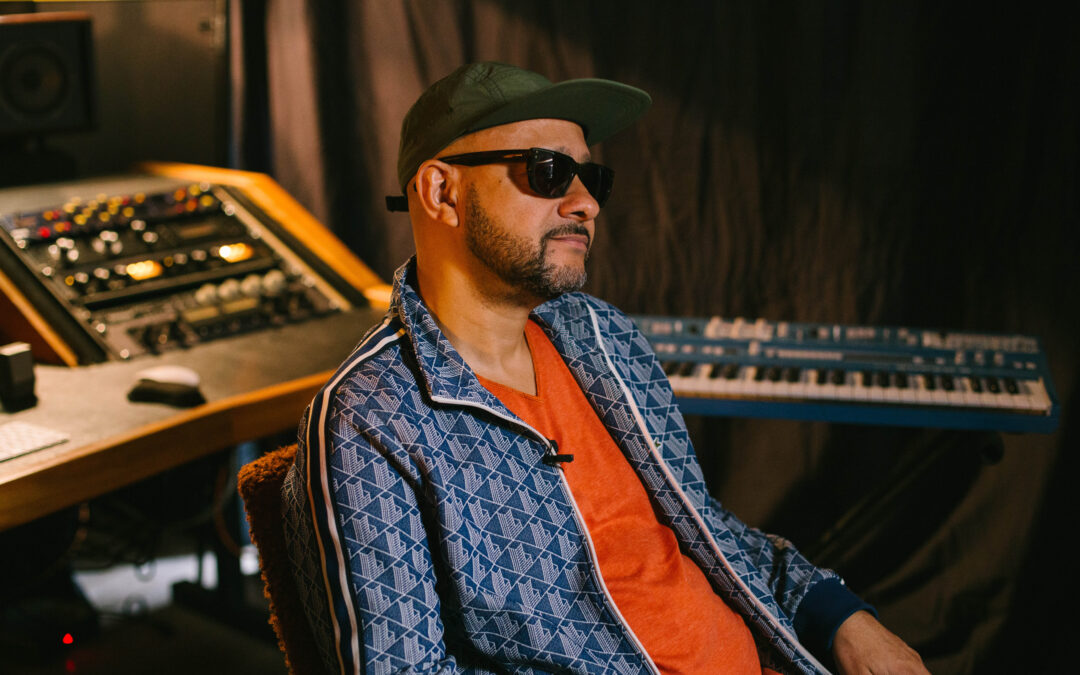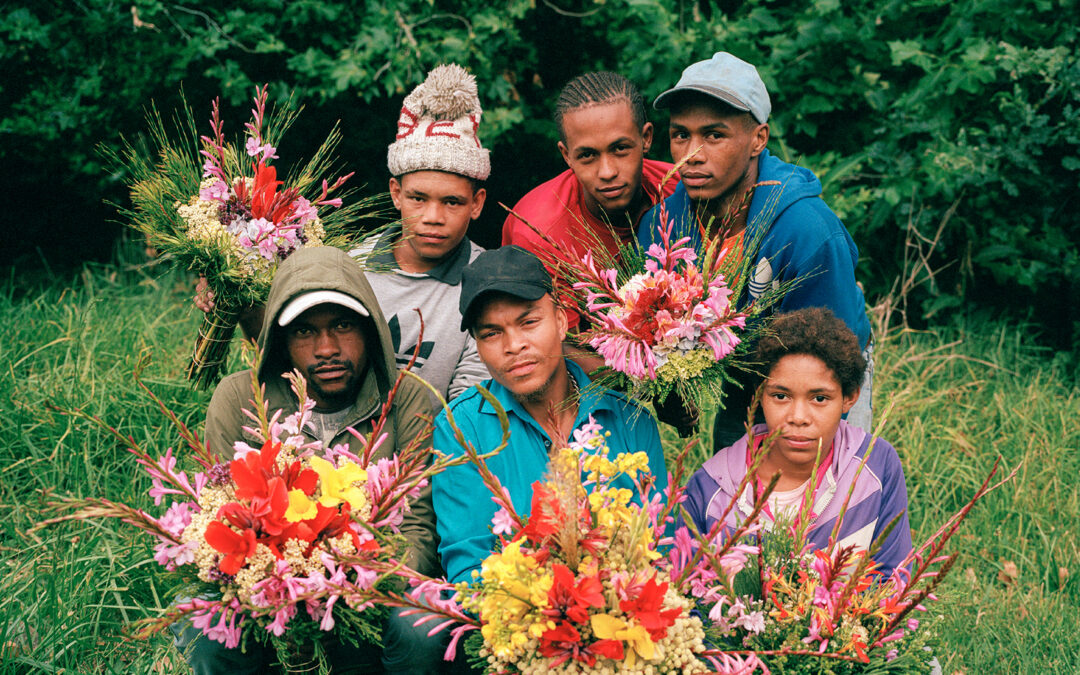Many are called, few are chosen. If to be chosen requires one to be clear in their vision – then Zizipho Poswa’s vision is as crystallised as it gets. As an artist for whom their path was required to unfold with absolute conviction – on earth and beyond – Zizipho’s answering of the call is a testament that continues to unfold and undulated throughout South Africa and across the planet.
Few objects transcend its utilitarian purpose with such immense power as the vessel. Beyond a means to carry and contain – the vessel as a sculpture is repository for the human experience in all its shades of ritual, memory and movement throughout time and landscapes. For artist and ceramicist Zizipho Poswa, her sculptural practice began with vessels. In the nearly 20 years of her illustrious career, from pinch to large scale sculpture – the vessel has since metamorphosed into varying emanations across all of Zizipho’s thematic concerns – notably, womanhood, being African, being isiXhosa – being an artist and a child of the skies and land. In a quote often credited to activist Brandan “BMike” Odums – ‘I am my ancestor’s wildest dreams’ – Zizipho embodies this, and then some.
Zizipho’s international acclaim is vast – with examples such as Spanish luxury brand Loewe becoming one of her biggest patrons; among them is Jonathan Anderson commissioning Zizipho’s ‘uNozakuzaku II (Negotiator II)’ sculpture as a centrepiece for the redesign of Casa Loewe Barcelona. As described by Southern Guild, who represent Zizipho internationally, their most recent showcase at Design Miami welcomed “three large-scale bronze sculptures by Zizipho Poswa inspired by the practice of ‘umthwalo’ (load), whereby Xhosa women transport heavy items on their heads, often walking long distances in rural areas. Part of the artist’s iiNtsika zeSizwe (Pillars of the Nation) exhibition at Galerie56 in New York earlier this year, these works are named after specific women within the artist’s extended community. This past summer, Poswa produced her most monumental ceramic series to date as an artist-in-residence at the Center for Contemporary Ceramics, California State University, Long Beach, which will debut when Southern Guild opens its Los Angeles gallery in February 2024.
Zizipho Poswa ‘Mam kwayi’, 2023. Armory Show. Cr. Christof van der Walt. Southern Guild.
Zizipho Poswa ‘Mam uNoAnswari’, 2023. Cr. Hayden Phipps. Southern Guild.
Zizipho Poswa, ‘Mam uNoSekshin’, 2023. Cr. Hayden Phipps. Southern Guild.
Zizipho Poswa ‘Mam uNoBongile’, 2023. Cr. Hayden Phipps. Southern Guild.
Zizipho Poswa’ Mam uNoMathemba’, 2023. Cr. Hayden Phipps. Southern Guild.
Zizipho Poswa’ Mam’uNoNezile’, 2023. Cr. Hayden Phipps. Southern Guild.
Zizipho Poswa ‘Mam uNoZinzile’ 2023. Cr. Hayden Phipps. Southern Guild.
Zizipho Poswa ‘Mam uNoSayini’, 2023. Cr. Hayden Phipps. Southern Guild.
CEC was invited to Zizipho’s studio, Imiso Ceramics, one that she shares and started with acclaimed artist and fellow ceramicist Andile Dyalvane. Split into two halves – one side as Zizipho’s and the other as Andile’s – the space still holds a flow in which Imiso is a space of collaboration and interconnectedness among Zizipho, Andile and their team. On the founding of Imiso, Zizipho tells us that “we have been around for 18 years. Andile and I had decided we wanted to build something that is true to us, that fuels us and connects us to where we come from. We both have two very different styles. I do brightly coloured, lots of patterns and texture – which is my textile design background. Andile and I met in university (CPUT), so Imiso was born out of our respective backgrounds – Andile at a ceramic studio and I was at textile design studio. My beginning was creating hand painted table linen and I was obsessed with mixing colours and working freehand! It was beautiful, but I had to create specific designs for the studio – so Imiso was born out of wanting that freedom ourselves.”
With a studio and a store at the Biscuit Mill – where it all began 18 years ago – Zizipho muses that “We were really fortunate to get the space at the Biscuit Mill. Andile had already had a solo-show at Irma Stern, so we kind of head-hunted to be part of the space. Ceramics became our singular focus over textiles – and it took off so beautifully. I had already been exposed to ceramics through university, it was easy for me to settle into the medium and I knew there was something really special about clay that I had to explore.”
“It’s a calling – it finds you no matter where you are.” says Zizipho of her role as an artist, as she takes us around the intricate Imiso studio space. For Zizipho, her artistic process follows a pattern of ‘becoming’, with each body of work resulting in an immersive, research-led process in which she uncovers her cultural tapestry – oftentimes, stepping into the roles of those she wishes the work to honour and embody. Zizipho describes that “my most recent body of work, ‘Pillars of the Nation’ was centred around the load women carry – literally, the vessels on their heads – and how this represents their trials and their tribulation, but I wanted to celebrate how this translates to greatness. I went back home to the Eastern Cape and I had to step into the shoes of the women I was referencing. So, the photographic and film accompaniment to iiNtsika zeSizwe gave essence to what I was trying to say. The women who inspired me and raised me were so proud. I wore some of the oldest garments of our traditional garments and I got to step into the original, hand-stitched garments that hold so much of our cultural heritage and memory.”
Lobola, is a customary African tradition where the groom or his family presents gifts, usually livestock or money, to the bride’s family as a symbol of respect and gratitude. This practice signifies the groom’s commitment and ability to provide for the bride; though it has become subsumed by our age of commodification, misunderstood specifically financial undertaking. For Zizipho, she was called to interrogate this tradition through a different lens; one in which this tradition was honoured for its bringing together of families. Voluminous shapes – reference the female form – were adorned by bronze horns, created by Zizipho in a set of twelve. As she explains, “iLobola as a study was my attempt to look closely at this customary tradition. It’s no longer taken so seriously and if it is, people make an assumption by reducing this practice to a financial transaction. For us, iLobola is about building and connecting families – it is an intricate, beautiful process in which stages of negotiation foster trust within this undertaking of a marriage union. I always want to make us proud of our heritage and such thoughtfulness in our traditions.”
Zizipho Poswa Process, 2022. Cr. Hayden Phipps. Southern Guild.
For uBuhle boKhokho (the beauty of our ancestors), Zizipho delved deeper into her Xhosa heritage, this time – focusing on the intricate relationship between hair and Blackness. In a five-month endeavour, Poswa crafted and adorned herself with 12 distinct hairstyles, meticulously documenting each manifestation through photography as an integral aspect of her artistic process, with an accompanying set of sculptural works. As Zizipho notes on the process, “I usually use bright colours – that is the space I’m most comfortable in. For uBuhle boKhokho, the works were a celebration of being Black and of Black hair and its strength, so the collection had to be black. I was tempted to use colour but I had to return constantly to Blackness as the foundation of this collection. I sought different tones of black and in that, I found the vastness and richness of black as a colour and being Black as who we are.”
Zizipho’s foray into bronze – photography – and technical mastery is perhaps triumphed only by her commitment to cultural storytelling. Zizipho’s role as a conduit for the essence in being a woman, being Xhosa, being African and being an artist – it is profound and illuminating, inspiring generations of artists present and still to become, “I pinch myself everyday. I’m so proud to be where I am – I am this artist that others can look up to, because I didn’t have that. There’s young ones who can look up to me and Andile and the space. My story is not an overnight success but it is a story of success. We are pushing really hard for access to be experienced by all who choose to come after us.”
Visit Imiso Ceramics at the Old Biscuit Mill HERE
Follow Zizipho Poswa HERE
Follow Imiso Ceramics HERE
Follow Andile Dyalvane HERE
Follow Southern Guild HERE
Written by: Holly Beaton

